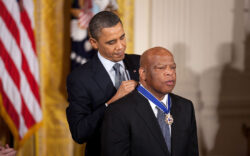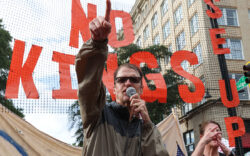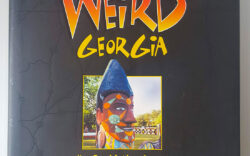Atlanta was aflame with anger earlier this month after police in the city shot and killed a young African-American man named Rayshard Brooks. Like scores of cities across this nation, Atlanta had been the scene of mostly peaceful and multi-racial protests that were sometimes marred by incidents of looting and vandalism in the aftermath of Minneapolis cops killing a black man named George Floyd in May. The recent racial tension and class conflict in Atlanta was fodder for newspapers and television reports in a town that had billed itself as “the city too busy to hate” because of its mostly moderate response to the Civil Rights struggles in the segregated South during the late 1950s and early 1960s. While Southern cities like Birmingham became hotbeds of hatred and tinderboxes of racial injustice during the Jim Crow years, Atlanta managed to avoid the image of intolerance so prevalent in Birmingham and many other cities in the region.
Such was not always the case in Atlanta. When the 20th Century was young, the roots of racism ran deep in Atlanta. In 1906, the city was the scene of days of racial rioting and mayhem that showed that many citizens of the bustling city were never too busy to hate. In his 2001 book, Negrophobia: A Race Riot in Atlanta, 1906, Emory University professor Mark Bauerlein wove a compelling story of how Jim Crow segregation laws, political posturing by white candidates during a Georgia gubernatorial race and sensationalist race-baiting by the city’s white-owned newspapers led to a tragic and deadly riot that terrorized Atlanta for four days in September 1906. History long forgotten or suppressed comes alive with action and immediacy in the narrative of Negrophobia.
Against a backdrop of postbellum Atlanta rising from the ashes of the Civil War, the black moderate Booker T. Washington and the more militant W.E.B. Du Bois waged a bitter rivalry for the hearts and minds of their fellow African Americans in 1906, while the black neighborhoods of Atlanta sweltered under segregation. The four competing white-owned Atlanta newspapers ran daily stories and howling headlines depicting the city’s African-American community as awash in crime, lust, alcoholism, opium pushing and cocaine peddling. Atlanta was a city ready to explode in 1906. Newspaper stories and political demagoguery about black crime in the city lit the fuse. White mobs attacked black men, women and children in Atlanta, dragging African-American citizens out of stores and streetcars and beating or killing them during the days of rioting that terrorized the city. The official death toll from the Atlanta race riot was 12—10 blacks and two whites—”but there’s no way of knowing for sure,” said author Baurlein, who estimates that a total of about 50 black people may have been killed by angry whites during Atlanta’s days of violence in 1906.
Flash forward to 1921 and the city of Tulsa, OK. A prosperous African-American neighborhood called “Black Wall Street” was attacked and burned by rioting white citizens. Explosives were dropped on the neighborhood from airplanes, the first use of aerial warfare against citizens in America. Nobody to this day knows the full toll in deaths, injuries and property destruction, but the carnage was horrific as dozens and possibly hundreds of victims, mostly black, died in Tulsa’s urban warfare of 1921. Today Tulsa is getting ready to commemorate the 100th anniversary of the riot next year, but activists in the city were angered this month when President Donald Trump chose the city as the site of his first campaign rally since the outbreak of the coronavirus pandemic.
The years after World War I were times when white mobs lynching blacks were grisly but common events, and race riots erupted in Chicago after a black youth was killed by whites there because he drifted into a segregated area of a beach in the city. The situation was the same after World War II. Americans fought that war to defeat fascism, but fascist philosophies were still alive in the hearts and minds of all too many white Americans as the war dragged on. In 1943, Los Angeles was the scene of the infamous “Zoot Suit Riots” when white American military men and Hispanic youths battled on the streets of Hollywood. That same year, riots stemming from racial animosity broke out in New York City and Detroit. A nation that was fighting against the racism of Hitler’s Germany showed that it had racial problems of its own. New York, Los Angeles and Detroit would again become scenes of rioting and carnage during the turbulent times of the 1960s.
In his book Rage in the Streets: Mob Violence in America, writer Jules Archer asserted that “those who complain of social injustice need to make powerful but nonviolent appeals in the court of public opinion.” The often violent response to racial injustice throughout the history of an America that was founded on genocide and slavery is proof today of what philosopher George Santayana meant by his famous admonition written in 1905: “Those who cannot remember the past are condemned to repeat it.”
Like what you just read? Support Flagpole by making a donation today. Every dollar you give helps fund our ongoing mission to provide Athens with quality, independent journalism.










